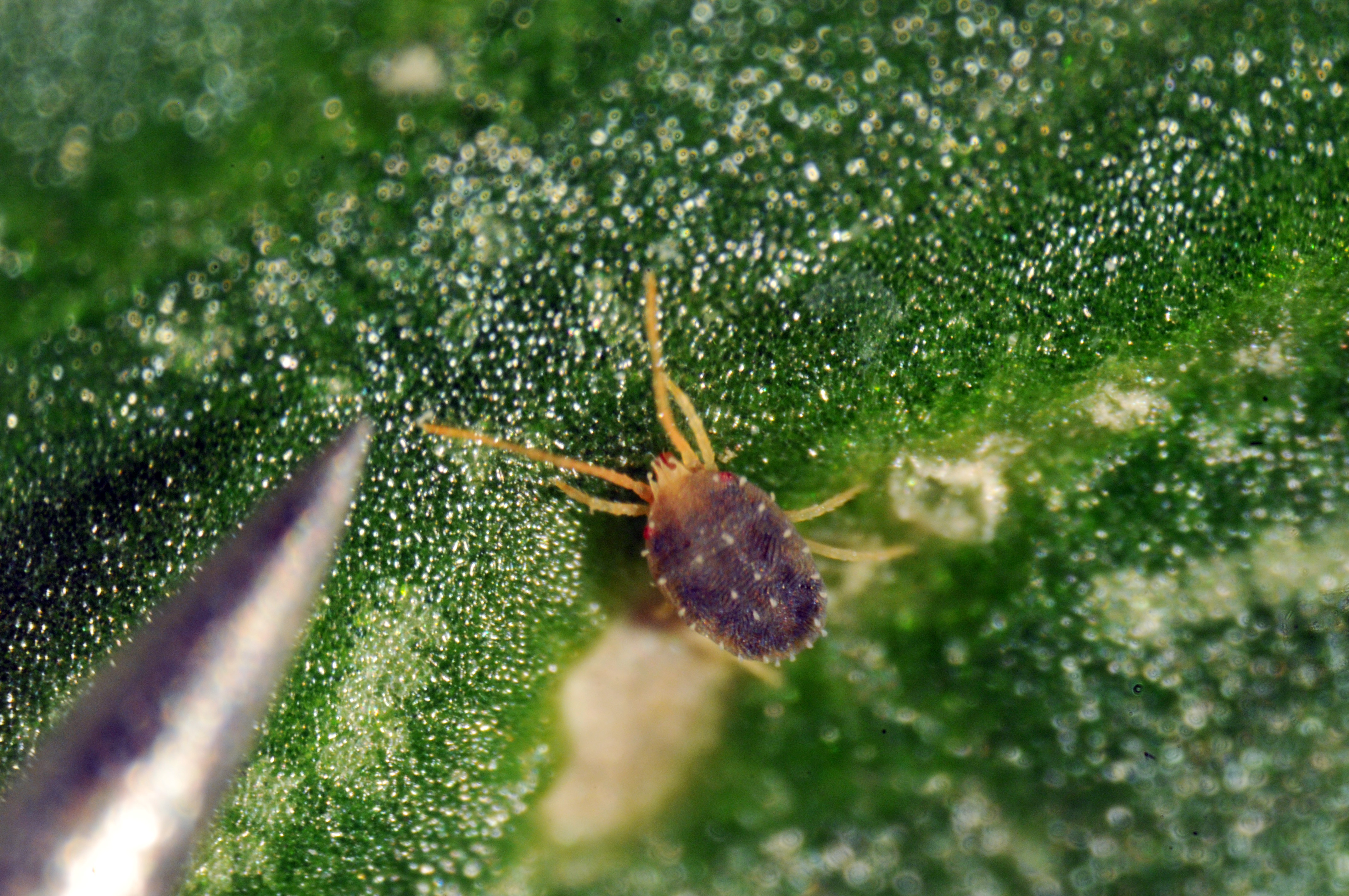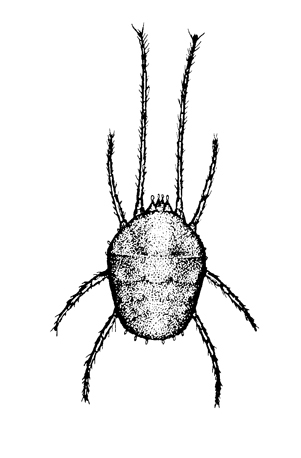Household & Structural
Clover Mites In The Home
Gary W. Bennett and Timothy J. Gibb, Extension Entomologists
If you want to view as pdf, click here
This publication The clover mite can become an annoying household pest, especially in and around homes where new lawns are being established or where there’s a heavy growth of well-fertilized grass close to foundation walls.
The mites are very tiny creatures (smaller than a pin head) and may occur in countless numbers. Clover mites can be distinguished from other mites due to their unusually long front legs. These are twice as long as the other legs. They usually appear first around windows, but later may overrun the entire home. They do not bite people or cause any damage indoors, but are extremely annoying and may leave a red stain when crushed.
Clover mites feed on grasses, clovers and certain other plants in the lawn and around the home. They often crawl into cracks and crevices to molt and lay eggs. Typical “hiding places” are under the loose bark of trees, on foundations walls, beneath siding and around window frames.
Clover mites are most abundant in the fall and spring and are relatively inactive during the hot summer months and again during cold weather. They migrate into homes either when population pressure becomes too great or when feeding conditions become unfavorable, such as the onset of hot or cold weather.
Clover mite. (Photo Credit: John Obermeyer)
Line drawing of a clover mite.
CONTROL MEASURES
Once inside a home, clover mites are difficult to control. Although those present can be killed with household labeled sprays, more are likely to show up. Thus, prevention, keeping the mites from ever entering the home, is the best approach. The following are preventive and control measures that have proven to be effective.
- Grass and shrubbery growing against foundation walls make it easy for mites to get from lawn to house. To prevent easy access, lay a barrier of pea gravel 18-24 inches wide along the foundation walls. If pea gravel is not practical, leave bare soil or use flower beds as the barrier.
- Spray both barrier strip and foundation walls with a miticide. Where possible, also treat the inside of the foundation walls, including the plates and areas above them. If there is no barrier strip, treat foundation walls and the grass itself for a distance of 10-20 feet outward from the walls.
- At first sign of mite invasion, paint or spray window channels and outside frames with a labelled formulation of one of the miticides. Also, treat any other obvious entrance points. Repeat as necessary.
- Mites indoors can be killed with a spray containing synergized pyrethrins, but direct contact is necessary and permanent protection cannot be assured. Vacuuming will provide short term relief.
- In situations where mites are especially difficult to control, consider the services of a commercial pest control specialist.
Miticides effective and safe for use as barrier sprays (described above) include pyrethrins and synthetic pyrethroids. The proper spray concentration will depend on whether or not flowers and shrubs are in the area to be treated. Follow label directions closely.
SCIENTIFIC NAME
Clover mite - bryobia praetiosa Koch
READ AND FOLLOW ALL LABEL INSTRUCTIONS. THIS INCLUDES DIRECTIONS FOR USE, PRECAUTIONARY STATEMENTS (HAZARDS TO HUMANS, DOMESTIC ANIMALS, AND ENDANGERED SPECIES), ENVIRONMENTAL HAZARDS, RATES OF APPLICATION, NUMBER OF APPLICATIONS, REENTRY INTERVALS, HARVEST RESTRICTIONS, STORAGE AND DISPOSAL, AND ANY SPECIFIC WARNINGS AND/OR PRECAUTIONS FOR SAFE HANDLING OF THE PESTICIDE.
August 2016

It is the policy of the Purdue University Cooperative Extension Service that all persons have equal opportunity and access to its educational programs, services, activities, and facilities without regard to race, religion, color, sex, age, national origin or ancestry, marital status, parental status, sexual orientation, disability or status as a veteran. Purdue University is an Affirmative Action institution. This material may be available in alternative formats.
This work is supported in part by Extension Implementation Grant 2017-70006-27140/ IND011460G4-1013877 from the USDA National Institute of Food and Agriculture.
1-888-EXT-INFO
www.extension.purdue.edu
Order or download materials from www.the-education-store.com




